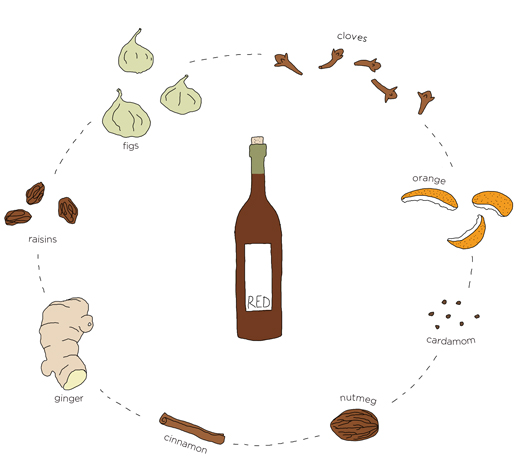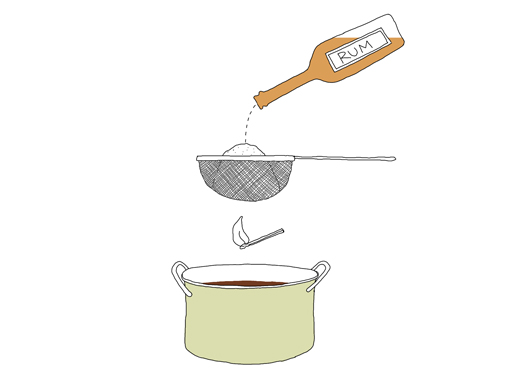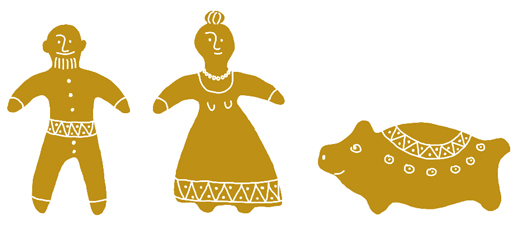
With or without snow there’s not much that’s as heart warming as glögg (Swedish traditional mulled wine). In wintertime, around Christmas, the rich smell is so welcoming its no wonder its such a successful way to treat your guests. Last winter I had to warn my guests that even though the wine was served hot it was not low on alcohol. They didn’t believe me, so I was happy they could all walk home safely after our joyful evening together.
Like other Swedes I’m used to buying glögg already spiced at the Systembolaget, which is the one and only company that can sell liquor in Sweden. Systembolaget has an impressive selection of wine from all around the world and they have over 40 different kinds of glögg, both with and without alcohol. There is even a white glögg which is commonly served cold as an apertif at parties around Christmas. With a selection that great it’s hard to even think of making your own, unless you are a Swede like me living abroad. So I started, and today I can’t ever imagine going back. At Christmas I want my own glögg. And the glögg has to be done with some drama by caramelizing the sugar.
glögg recipe
one bottle of red wine (a decent full bodied wine such as Cabernet Sauvignon, Syrah)
spices
3 cinnamon sticks
one teaspoon whole cloves
one teaspoon ground nutmeg
2 peels of an orange
5 whole cardamom pods
one small piece of ginger, chopped
20 raisins
a couple of dried figs
for caramelizing
one cup (240 ml) rum
1/3 cups (75 ml) brown sugar
to serve with
blanched almonds
raisins
Heat up the wine but be careful, the wine should not boil. Drop all the spices into the warm wine, turn the heat off and let rest covered for at least 4 hours (best overnight).
Sieve the spices from the wine and heat it up in a saucepan. Again make sure it doesn’t boil. In the meantime prepare a stainless strainer filled with the sugar. When the wine starts to get hot, place the strainer over the saucepan. Pour the rum over the sugar and light the alcohol steam below. Let some of the sugar drip into the wine mixture before adding all to the wine (if you wait for all the sugar to melt the alcohol will disappear with the flames). Take the saucepan from the heat and cover with a lid to stop the flames. If you think the glögg is too sweet you may add some more wine or rum.
Serve the glögg in small cups together with some blanched almonds and raisins in every glass. Glögg is also great with gingerbread cookies.
Story and recipe was originally posted at EcoSalon on 21st December 2011.



